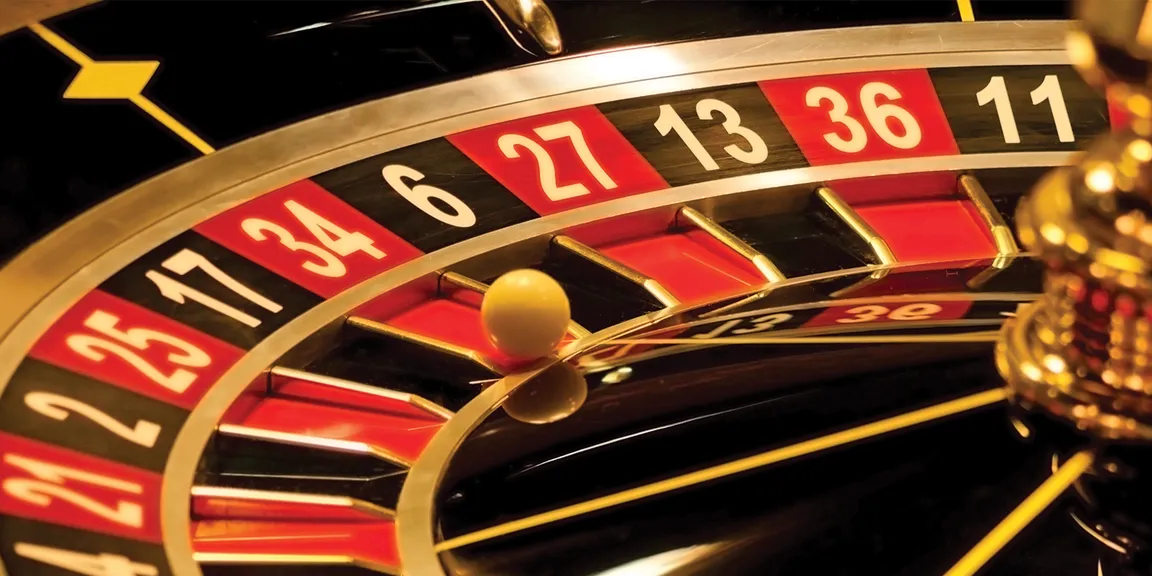Buddha in Business: The grand design to achieve your vision!
Janaki Rajagopalan

Friday October 19, 2018,
8 min Read
In the fifth edition of Buddha in Business, our columnists examine the fourth building block of strategy and find out how it can enhance your business
Over the last three weeks, we have addressed three building blocks of your business model – product, customer, value – as part of our eleven-part Buddha in Business series. Today let’s look at the fourth building block, strategy - what it is and what it does to your business. And of course, as always, we will try to understand this within the framework of the Buddhist doctrine.
What is strategy? As is the case with many management terms, this one too is borrowed from the military. And as is the case with many English words, this one too has its origin in Greek, strategia, which means the ‘office or command of a general’. The French who borrowed it first, refined it to mean, ‘the art of a general’.

Strategy is aligned to vision in the business world
In other words, it was the grand design, the action plan, the blue print, the methodology of the leadership team to achieve what it set out to achieve. It could be conquering, it could be vanquishing, or it could be collaborating; it could be the end goal or it could be one of the milestones among many to reach the end goal.
In the context of business, strategy is aligned to vision. And since vision is articulated by the leadership team, strategy necessarily is a top-down artefact. There are several strategies within the context of an organization. For instance, one could be the strategy of facetime with your customer.
In that (to paraphrase from my book, ‘Start up Stand up’), there is a customer facing strategy which may set up the protocol of how you should behave when you are interacting with your customer; there is an acquisition strategy of how will you woo your customer to your corner; there is a customer engagement strategy of how will you keep him happy, having wooed him to your corner; and there is a customer retention strategy of keeping him so happy time and time again that he will never leave you for your competitor.
You will thus have strategies in various functions of your organization – finance, HR, Operations – and, in a good organization, they will all dovetail into its vision for growth.
Let us understand strategy applying the Buddhist framework to a very interesting use case – the slot machines in Las Vegas.
Natasha Schull, an anthropologist spent fifteen years in the field studying the gambling industry in Las Vegas and what prompted casino owners to move from roulette wheels and card tables to setting up electronic gaming terminals - and the strategy they adopted as an industry to create an addictive product. Her book, Addiction by design is one of the best product management books that there is.
What was the pain point that the gambling industry addressed?
Casino owners noticed two trends. The first significant trend was that from being a social activity, gambling was increasingly moving towards becoming solitary. The second trend was that in the traditional format of roulette wheels and card tables, the layout within the casino demanded much more real estate without commensurate return.

The slot machines in a casino are designed in such a way that the player will play in isolation
The logical answer was therefore to move to electronic slot machines. Significantly, more machines could be placed within the casino. The size and modular build of the machines also lent themselves to being packed like sardines in every square inch of space.
The mechanical rhythm of the slot machines sucked the players into a trance-like ‘machine zone’. They forgot everything else and the world around them. As the author says, “…it blurred the lines between human and machine, compulsion and control, risk and reward”.
You will understand this addiction better when we tell you that the players came to the casino on a Friday evening, wearing diapers, so that they did not even have to get up from the machine to go to the loo till Sunday evening!
What was the origin or source of this pain?
The two main problems plaguing the gambling industry were the cost of real estate and the constant challenge of enticing gamblers with something new, something exciting, something that pandered to their increasing sense of ‘I-me-and my machine’. In other words, the new trend of digital isolation.
The casino owners therefore had to figure out a way of reinventing and optimizing their revenue mainstay by bringing down their real estate costs and simultaneously increasing their customers’ footfalls.
How did the casino owners put an end to this pain?
They threw the cumbersome roulette wheels and card tables out. They redesigned the casino in such a manner that it could accommodate maximum number of slot machines. The design was diabolical.
Even in a crowded casino, the player and his machine had splendid isolation and the design was meant to encourage the player to keep on playing till he was physically exhausted. Apparently even the washrooms were located far off, thereby dissuading the player from abandoning his machine!
What did the casino owners do to avoid pain?
They understood the psychology of their customer. The player continues to play till his body gives way – and not because he wants to win after a losing streak or he wants to continue winning.
Gambling addicts play not to win but to keep on playing! And the isolation and engagement with their machine helps them block the rest of the world out. So their strategy was to encourage the players to keep on playing and to lose themselves even as the casino owners made profit.
Schull describes it thus: “The strategic designs behind game algorithms, machine ergonomics, casino architecture and ‘ambience management’, player tracking and cash access systems (were) all designed to meet the market’s desire for maximum ‘time on device’ “.
Now let’s understand how the casino owners strategized to make time-on-device maximum within the eight guiding posts of the Buddhist doctrine...
Without a doubt, the slot machines have hit the right view. It is a heady experience that combines the excitement of mystery and the anticipation of unpredictability. It is the automatic rhythm of the entranced state – one that Natasha Schull terms the “ludic loop of, open and close, open and close; you win, you lose, nothing changes"
Casino owners were on the right-thinking track, for sure. They knew that if they could speed up the games, they could be more liberal in letting players win more – without themselves losing money. You see, players now had more games to play at reduced volatility (in gaming parlance, this translates to the frequency of experiencing big wins and losses).
By creating a positive perception of being able to win, electronic slot machines invited players to happily spend more and keep the cash register ringing for the casino owners. A win-all situation!
Listen to what Gary Loveman, the former CEO of Harrah’s casino at Las Vegas, has to say. "The slot player was the forgotten customer. I had to be willing to be unsexy in this. I can take you to a casino that would have a lot of young beautiful people in there and you would say, ‘Man, this is a happening place.’ I could take you to another place where there are a lot of people who look like your parents. The latter would be a lot more profitable than the former. My job is to make the latter." Right speech, if ever there was one!
The electronic slot machine is based on the right action of an ingenuous product design. It works on a loop that goes from a trigger to an action to variable rewards, and back to re-investment. By adding concave screens, exciting aesthetics, franchise tie-ins and game soundtracks, they have the players literally addicted to playing – winning or losing be damned!
What could be the right livelihood in a game of gambling and addiction, one may wonder. Yet, as Schüll’s research revealed, players are hooked to the idea of ‘zoning out’ - of escaping from memories and thoughts of memories they would rather forget. And product designers of slot machines made it their mandate to make players forget their reality and focus only on playing.
This they did with the right diligence in taking the players to a hyper-focused state. There is a little bit of the goal, there are clear strategies to getting to the goal, there is just the right degree of challenge and, to cap it all, there is the instant result of a win or not. Add intelligent speeding to this - players now reach a state of what psychologists term as ‘euphoric equilibrium’.
Both designers of the slot machines and casino owners have shown the right mindfulness in business strategy to engineer such addiction. Through the video slot machines, they lengthened the time of play for greater player satisfaction. With the Random Number Generator (RNG), they controlled the volatility to improve the risk-reward perception.
Remember the Skinner experiment of tension and release with pigeons? Today’s slot machines show the right concentration of release through reward in luring the players’ to engage. The doling out of smaller but right-sized jackpots at more frequent intervals places the players’ minds in just the perfect zone.
It eliminates the frustration of not winning with the same élan as it does with the boredom of too-frequent wins.
See how easy it is to strategize to achieve your vision within the framework of the Buddhist tenets!




